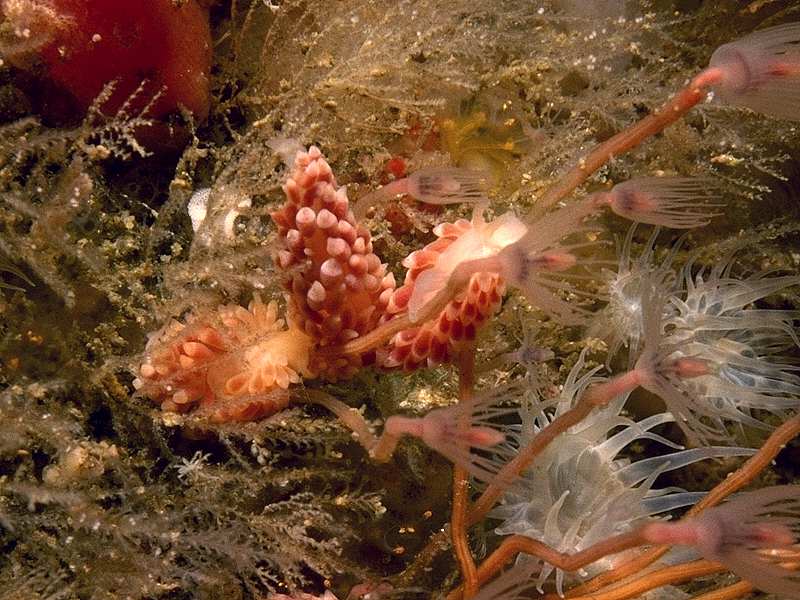| MOLLUSCA : Nudibranchia : Trinchesiidae | SNAILS, SLUGS, ETC. |
Catriona gymnota (Couthouy, 1838)
 |
| Catriona gymnota |
Description: The cerata of this nudibranch are more swollen than in Cuthona species. The digestive gland is orange pink in colour and the tips of the cerata have a broad white band of tiny epidermal glands. In larger specimens the rhinophores develop a pale orange suffusion. The foot is broad and rounded anteriorly. Large individuals may exceed 20mm in length.
Habitat: Feeds on Tubularia species, especially Tubularia larynx. Individuals are usually found amongst the stems of the Tubularia and are thought to feed by eating through the stems rather than on the polyps. Usually found in exposed places, in strong tidal streams, and in shallow water. The spawn consists of curved, lozenge-shaped packets of eggs.
Distribution: Found all round the British Isles, and across the Atlantic to eastern North America as well as south to the Bay of Biscay.
Similar Species: Similar in coloration to Cuthona nana but with far less cerata and a quite different habitat.
Key Identification Features:
- Orange-pink digestive gland.
- Unpigmented body.
- Tiny white epidermal glands form white band around tips of cerata.
Distribution Map from NBN: Catriona gymnota at National Biodiversity Network mapping facility, data for UK.
iNaturalist: Catriona gymnota at iNaturalist World Species Observations database.
GBIF data for Tenellia gymnota
WoRMS: Catriona gymnota at World Register of Marine Species. Accepted name: Tenellia gymnota (Couthouy, 1838). AphiaID: 890625.
Classification: Biota; Animalia; Mollusca; Gastropoda; Heterobranchia; Euthyneura; Ringipleura; Nudipleura; Nudibranchia; Cladobranchia; Fionoidea; Trinchesiidae; Catriona
| Previous species | Next species |
| Picton, B.E. & Morrow, C.C. (2024). Catriona gymnota. (Couthouy, 1838). [In] Encyclopedia of Marine Life of Britain and Ireland. https://www2.habitas.org.uk/marbiop-ni/speciesaccounts.php?item=W14780. Accessed on 2025-04-18 |